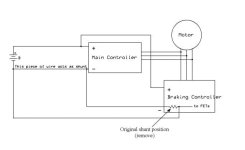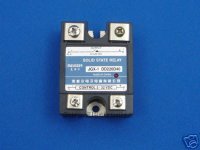lazarus2405 said:Also, on a completely unrelated note, can I connect the reverse/forward key in series with the power button on the analog clyte controllers, for an extra measure of tamper resistance? I've been running with the silly reverse disconnected, and I figured that might be a better use of a key switch.
Yes, that's a good idea and will work fine. Just double check that the switch is open in forward, otherwise you may need to join the reverse wires.




